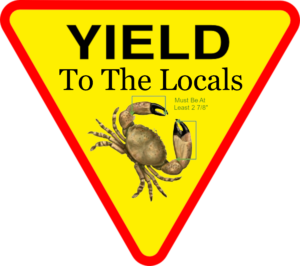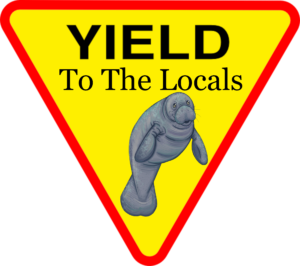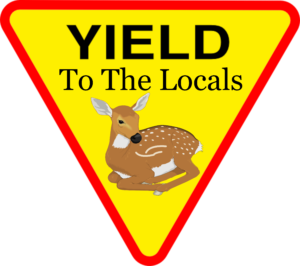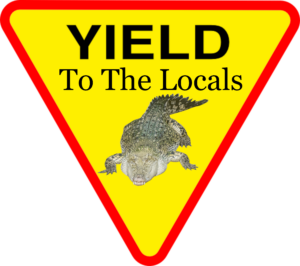At its May meeting, the Florida Fish and Wildlife Conservation Commission (FWC) approved regulation changes for cobia in state waters.
Changes effective July 1, 2022, include:
- Increasing the minimum size limit from 33 inches to 36 inches fork length for all state waters.
- Reducing the commercial bag limit from two to one fish per harvester per day for Atlantic state waters.
- Reducing the recreational and commercial vessel limit from six to two fish per vessel per day for Atlantic state waters.
These changes are consistent with pending regulations in Gulf of Mexico and Atlantic federal waters.
A recent stock assessment determined the cobia stock is undergoing overfishing, and as a result, reductions in current harvest are needed. These changes for commercial and recreational harvesters in state and federal waters are necessary to end overfishing, improve stock abundance and ensure future cobia fishing opportunities.
For more information, including the May 2022 Commission meeting presentation, visit MyFWC.com/Commission and click on “Commission Meetings.”
For current recreational cobia regulations, visit MyFWC.com/Marine and click on “Recreational Regulations” and “Cobia.” This page will be updated with the new regulations when they take effect.
Source: FWC approves cobia rule changes for state waters
About the Species
U.S. wild-caught cobia is a smart seafood choice because it is sustainably managed and responsibly harvested under U.S. regulations.
Population
Below target level but fishing rate promotes population growth.
Fishing Rate
Reduced to end overfishing.
Habitat Impacts
Fishing gear used to catch cobia rarely contacts the ocean floor and has minimal impacts on habitat.
Minimal, as commercial fishermen rarely target cobia.
Population Status
According to the 2020 stock assessment, the Gulf of Mexico stock is not overfished but is subject to overfishing. Summary stock assessment information can be found on Stock SMART.
- Scientists from NOAA’s Southeast Fisheries Science Center monitor the abundance of the population, and scientists, managers, and stakeholders assess the status of the stock through the Southeast Data, Assessment, and Review (SEDAR) process.
Appearance
- Cobia are dark brown with a single dorsal fin.
- Young cobia have distinct coloring, with alternating black and white horizontal stripes and splotches of bronze, orange, and green.
- Cobia are often mistaken for sharks or remoras. In fact, their closest living relative is the remora (shark sucker).
Biology
- Cobia are the only member of the family Rachycentridae in North America.
- They grow up to 6 feet and 100 pounds and live up to 12 years.
- They are able to reproduce when they are young—females mature at age 3 and males mature at age 2.
- Cobia spawn in coastal bays and estuaries several times throughout their spawning season, which lasts from late June to mid-August in the Southeast and from late summer to early fall in the Gulf of Mexico. Females release between 375,000 and 2 million eggs each time they spawn.
- They are strong, aggressive predators, mainly feeding on crustaceans but also fish and squid. Larger pelagic fish prey on young cobia.
Where They Live
- In U.S. waters, cobia are most abundant from Virginia south through the Gulf of Mexico.
- Cobia migrate seasonally in the Atlantic and Gulf of Mexico.
- Along the Atlantic coast, they move south and offshore toward warmer waters during the late fall and winter.
- Cobia found in the northeastern Gulf of Mexico during the summer move to south Florida waters in the winter, possibly spending the winter near the Florida Keys.
Fishery Management
- NOAA Fisheries and the Gulf of Mexico Fishery Management Council manage cobia in the Gulf of Mexico and on the east coast of Florida.
- The Atlantic migratory group cobia (from Georgia through New York) are managed by the Atlantic States Marine Fisheries Commission.
- Managed under the Fishery Management Plan for Coastal Migratory Pelagics in the Atlantic and Gulf of Mexico:
- Fishermen do not need a federal permit to harvest cobia.
- Gear restrictions:
- Drift gillnets are prohibited.
- Authorized gear includes automatic reel, bandit gear, handline, rod-and-reel, and pelagic longline.
- Cobia must be a minimum size to be harvested, and must be landed with their heads and fins intact. Current minimum size limit is 33 inches fork length. Amendment 7 will be increasing the minimum size limit to 36 inches fork length.
- Commercial and recreational fishermen have size limits, trip limits, and per person per day or per vessel per day bag limits.
- Annual catch limits based on best available science.
Harvest
- Commercial fishery:
In 2020, commercial landings of cobia totaled 131,000 pounds and were valued at $430,000, according to the NOAA Fisheries commercial fishing landings database.
Commercial fishermen do not directly target cobia and usually catch it while trawling for shrimp or fishing for other species such as mackerel.
- Recreational fishery:
- Recreational fishermen like cobia because it is a large, powerful fish that puts up a good fight and provides a tasty meal.
- In 2020, recreational anglers landed more than 4.6 million pounds of cobia, according to the NOAA Fisheries recreational fishing landings database.
These Keys Treasures Designs and many more are available on products such as T-Shirts, Stickers, Magnets, Mugs, Phone Cases, and much more at KeysTreasures.ReBubble.com






